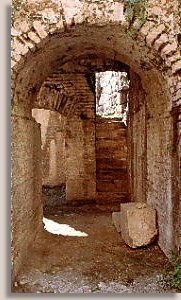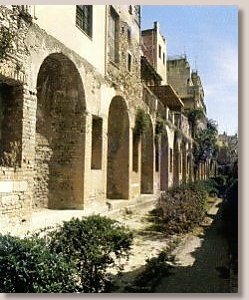|
The Odeon
 It was built during the empire of Caesar August Octavian. It is smaller in regards to the ancient Theater, because it contained not more than 200 onlookers, but it testifies the cultural attitudes of Taormina in that time. It was built behind the hill of St. Caterina of Alexandria, close to the Corvaja Palace. It was discovered for chance in June, 5th 1892. It was built during the empire of Caesar August Octavian. It is smaller in regards to the ancient Theater, because it contained not more than 200 onlookers, but it testifies the cultural attitudes of Taormina in that time. It was built behind the hill of St. Caterina of Alexandria, close to the Corvaja Palace. It was discovered for chance in June, 5th 1892.
The Odeon reproduces the bigger theater's architecture, but with a different orientation: the Greek-Roman Theater looks at south, while the small Odeon looks at north-east. It is made with brick material.
It follows the constructive scheme of all the Roman theaters and it's divided in three parts: scene, orchestra and cavea.  The Odeon's scene is consituted by the stylobate (plinth) and peristyle (colonnade) of a Greek temple (dedicated to Aphrodite), which came out during the excavations. The Odeon's scene is consituted by the stylobate (plinth) and peristyle (colonnade) of a Greek temple (dedicated to Aphrodite), which came out during the excavations.
Probably the little Odeon, built in the Polis's center, was used to read for a part and play musical auditions reserved to the magistrates, to the civic, military and religious magnates with their families and also to guests of respect.
The Naumachies
The naumachies' ruins consist of a big and strong wall, which, with the Theater, is the most ancient greek ruin in Taormina. The construction, which dates back to the first century BC, is 122 meters long and its height is 5 meters. It is adorned with 18 big niches, 3 meters wide, 1.70 deep and tall as the wall. In them there were statues of divinities and heroes.
|